
Thaumetopoeinae is a subfamily of moths in the family Notodontidae. This group is sometimes treated as a family Thaumetopoeidae with three subfamilies: Thaumetopoeinae, Anaphinae and Epicominae. However, it is now commonly treated at subfamily rank based on morphological and molecular phylogenetic evidence.

Calothamnus is a genus of shrubs in the family Myrtaceae and is endemic to the south-west of Western Australia. The common names one-sided bottlebrush or claw flower are given to some species due to their having the flowers clustered on one side of the stem or because of the claw-like appearance of their flowers. Calothamnus species are generally medium to tall woody shrubs with crowded leaves. In most species the leaves are crowded and linear in shape, and the flowers are usually arranged in dense clusters. The petals are small and fall off the flower soon after it opens but the stamens are long, numerous and usually bright red.

Calothamnus quadrifidus, commonly known as one-sided bottlebrush, is a plant in the myrtle family, Myrtaceae and is endemic to the south-west of Western Australia. The common name alludes to the arrangement of the flowers in the inflorescence which line up on one side of the stem. It is a shrub with grey-green, pine-like foliage covered with soft hairs and red, four-part flowers in spring. Widely cultivated because of its attractive foliage, colourful, unusual and prolific flowers, it grows in a variety of habitats and soils. In 2010, Alex George published a review of the species based on recent research and described a number of new subspecies.
Ardices is a genus of tiger moths in the family Erebidae. The genus was erected by Francis Walker in 1855 and the moths are found in Australia.

Agarista agricola, the Joseph's coat moth, is a medium-sized moth of the family Noctuidae. The species was first described by Edward Donovan in 1805. It is found in Australia.

Ardices curvata, the crimson tiger moth, is a moth of the family Erebidae. It was first described by Edward Donovan in 1805 and it is found in Australia. The species was formerly included in Spilosoma, but later generic status of Ardices was proved by Vladimir Viktorovitch Dubatolov (2005).
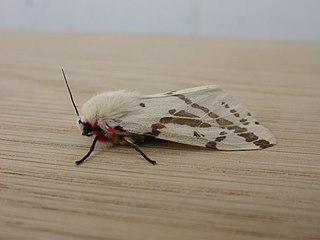
Ardices canescens, the dark-spotted tiger moth or light ermine moth, is a moth in the family Erebidae that is found across most of Australia. It originally was included in the genus Spilosoma, but later the generic status of Ardices was proven.

Epicoma melanospila, the black spot moth, is a moth of the family Notodontidae. It was first described by Wallengren in 1860 and it is found in Australia.

Epicoma tristis, the dark epicoma, is a moth of the family Notodontidae first described by Edward Donovan in 1805. It is found in Australia.
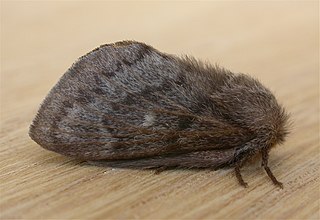
Pernattia pusilla, the she-oak moth, is a species of moth of the family Lasiocampidae. It was described by Edward Donovan in 1805 and is found along the coast of eastern Australia.
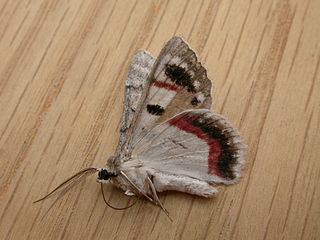
Crypsiphona ocultaria the red-lined looper moth or red-lined geometer, is a moth of the family Geometridae. The species was first described by Edward Donovan in 1805 and it is found in Australia.

Porela is a genus of moths in the family Lasiocampidae. The genus was erected by Francis Walker in 1855. All species are known from Australia.
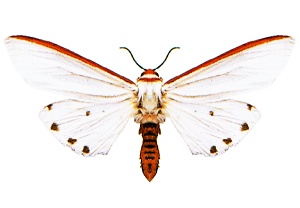
Paramsacta marginata, also called Donovan's tiger moth or Donovan's amsacta, is a moth of the family Erebidae. It is found in most of Australia, New Guinea, Fergusson Island and the Louisiade Archipelago. The species was first described by Edward Donovan in 1805.

Moerarchis is a genus of moths belonging to the family Tineidae.
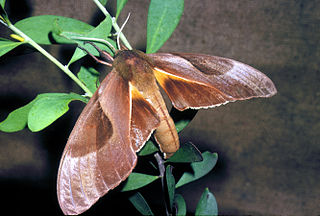
Coequosa triangularis, the double-headed hawk moth, is a moth of the family Sphingidae.
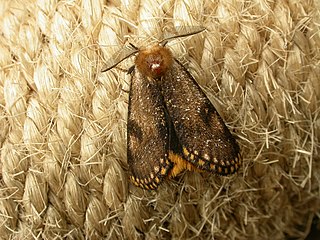
Epicoma contristis, the yellow-spotted epicoma, is a moth of the family Notodontidae first described by Jacob Hübner in 1823. It is known from Australia, including Tasmania, New South Wales and Victoria.
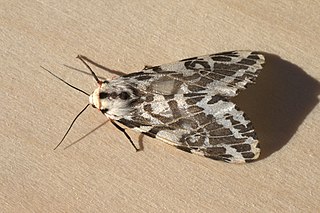
Ardices glatignyi, the black and white tiger moth, is a moth in the family Erebidae that is found in Australia. The species was first described by Le Guillou in 1841. Formerly included in Spilosoma, but later generic status of Ardices was proved by Vladimir Viktorovitch Dubatolov (2005). The larvae are polyphagous, and are known to feed on Lantana camara, Acanthus mollis, and Tradescantia albiflora.
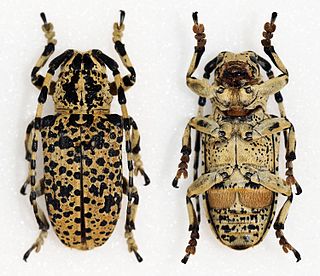
Penthea is a genus of longhorn beetles of the subfamily Lamiinae, containing the following species:
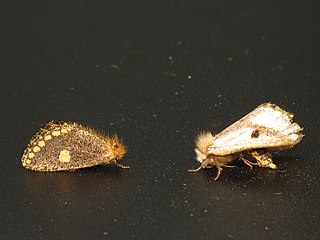
Epicoma protrahens is a processional moth of the family Notodontidae first described by Thomas Pennington Lucas in 1890. It is found on the east coast of Australia.



















